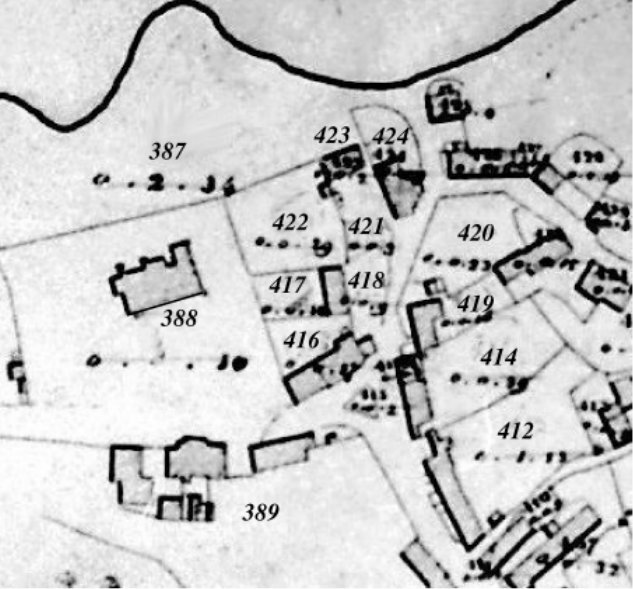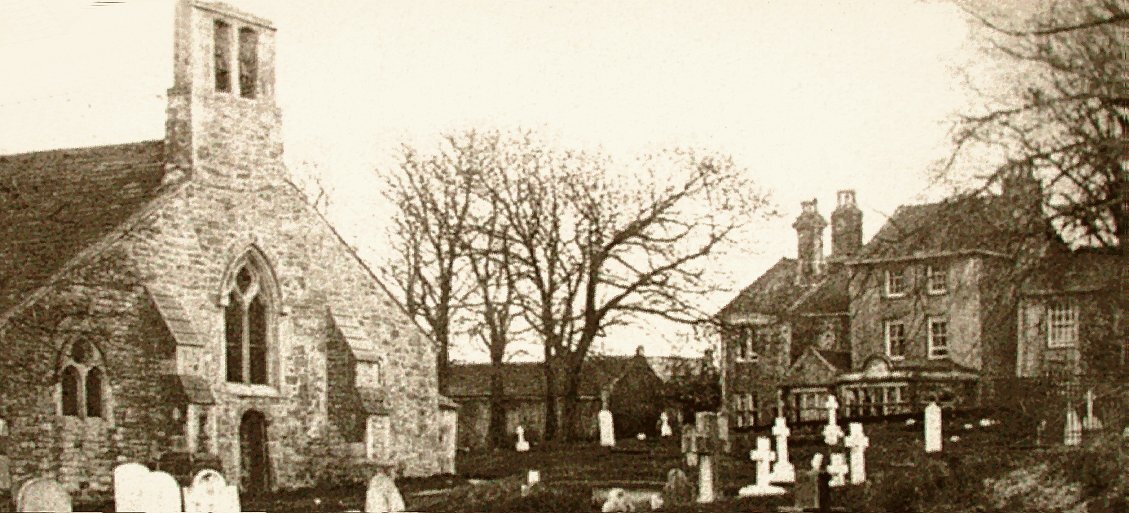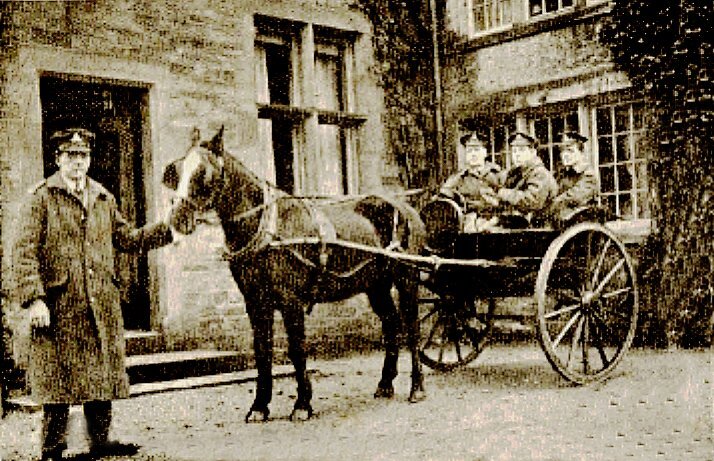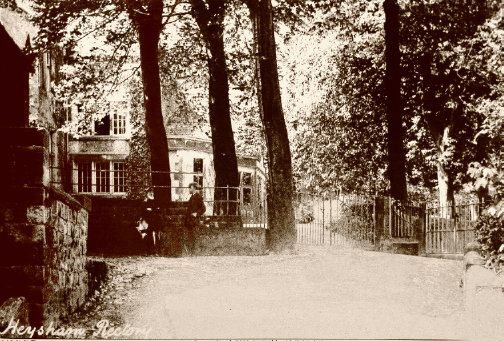The first rectory in the village was Greese Cottage. This was replaced by a new rectory, shown on the 1838 Tithe Map as property 389. Only the right hand building in the cluster still stands and is used a the church hall and cafe.
This rectory was refurbished by John Royds around 1860 and is shown in the early 20th century photograph below.
This building was demolished about 1960 and replaced by the present modern building standing further back to the south. The building behind the four beech trees (now 3) was the rectory stables (now the church hall and cafe).
During WW1, the Rectory became the Heysham Rectory Auxiliary Hospital (one of many in the UK) is mentioned by David Flaxington in his History of Heysham. He writes:
According to the 1917 Christmas edition of Heysham’s ‘Hospital Gazette and Calendar’ the hospital opened in the Spring of 1915 with 10 beds, which soon increased to 15 at the request of the authorities. Dr Herd provided the necessary medical attention “with skill and unfailing kindness”, while a regular nursing staff took care of the patients’ general welfare. Assisting the regular staff were many local people who offered their services voluntarily, resulting in the patients being outnumbered by those who were attending to their needs. Soldiers who were able would lend a hand inside the hospital or around the grounds, gathering fruit or tending to the rectory ponies, while some would go off on shopping expeditions or run errands in ‘the big trap’ drawn by Tommy the horse.
Below is an enhanced version of an image showing Tommy pulling the 'big trap' with another image of the Rectory below that.
We have been able to produce an enhanced replica of the original 2017 Gazette - if you would like a copy click here (8 page pdf file) .
The beech trees at the gate of the old rectory seen in both the rectory images above are estimated to have been planted in about 1803. One was felled in December 2007 on the grounds of perceived danger to buildings and the public. Subsequently a section of it was the subject of an extensive analysis by the national Arboricultural Advice and Information Service in Surrey who are currently investigating what tree rings can show about the history of individual trees and also the development of decay in old trees.Their estimate for the age of the felled tree was 204 years. For the full report click herer.
The Rectory was not the only building in the village to be used a as hospital in WW1, Carr Garth (now a private residence) at the junction of Bailey Lane and Knowlys Road was also used in this way.




